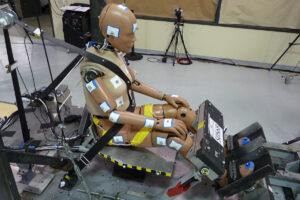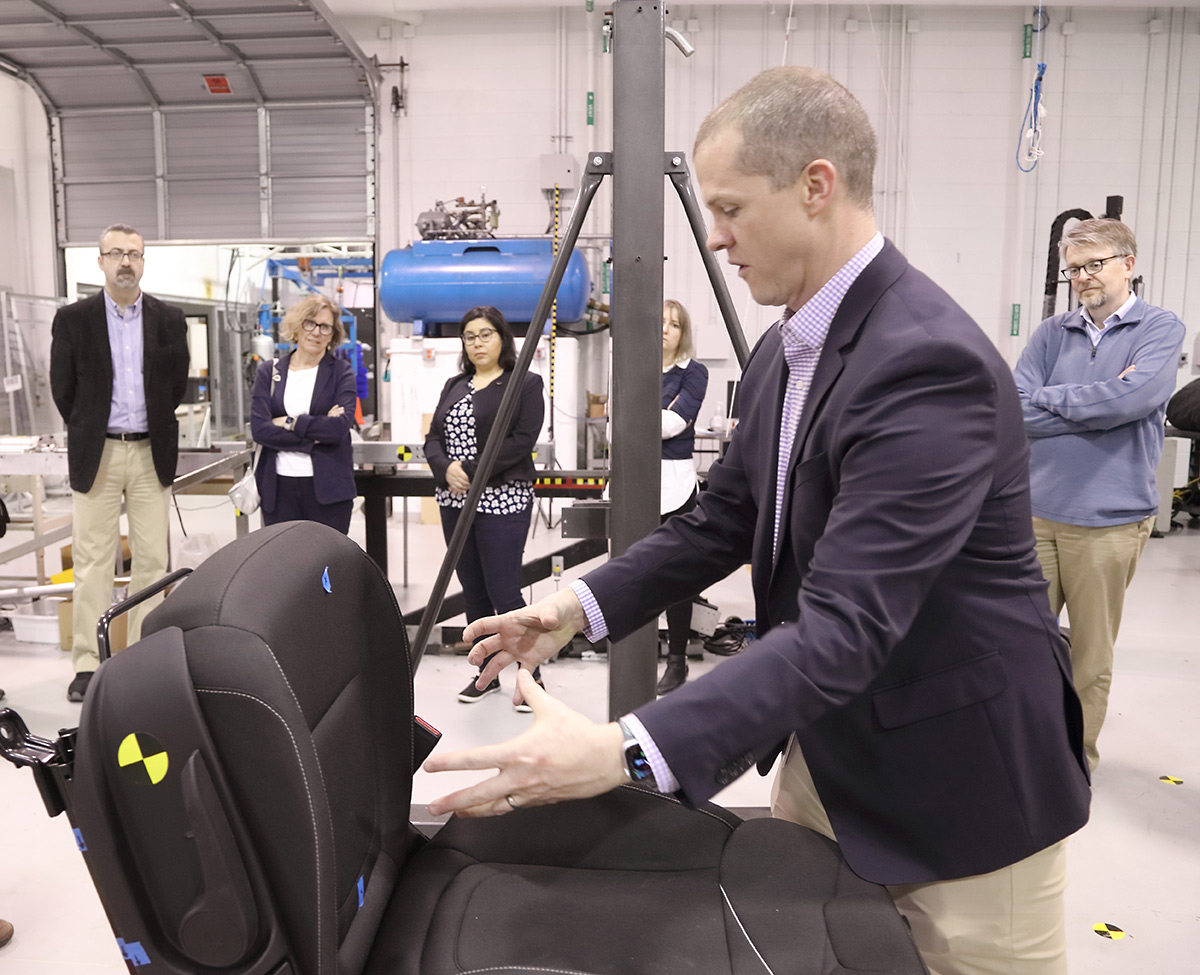
NHTSA taps University of Virginia to study vehicle safety impact on varying demographics
By onEducation | Technology
With more than $11 million from the National Highway Traffic Safety Administration (NHTSA), the University of Virginia’s Center for Applied Biomechanics (CAB) is conducting automotive safety studies by demographic groups, such as male and female.
Injury risk among each group will be measured by researching the impact of different seated positions, such as reclining or upright and the type of vehicle. The center will also strategize vehicle-involved pedestrian fatality mitigation.
Nearly 43,000 people died on U.S. roads in 2021, an increase of 10.1% and the highest total number recorded since 2005, according to NHTSA. Progress in a downward trend of roadway fatalities was consistent for 30 years but began increasing again in 2020 and 2021 during the pandemic.
The Bipartisan Infrastructure Law (BIL), also known as the Infrastructure Investment and Jobs Act, makes significant investments in highway safety. In January 2022, U.S. Transportation Secretary Pete Buttigieg announced the National Roadway Safety Strategy (NRSS), which includes a special focus on reducing traffic fatalities through five objectives — safer people, roads, vehicles, speeds, and post-crash care.
The money and support awarded to UVA come from the BIL. The eight competitive research contracts totaling $4.1 million with optional follow-on tasks bring the total to more than $11 million.
“These topics are at the heart of NHTSA’s vehicle safety research agenda and winning eight of the 12 they offered this year really shows how essential the CAB has become to the federal government’s efforts,” said Jason R. Kerrigan, CAB director and associate professor of mechanical and aerospace engineering.
CAB says it specializes in understanding how different demographics affect the risk of injury. In 2019, the center published a seminal study in the Journal of Traffic Injury Prevention that showed belted female auto occupants have 73% greater odds of being seriously injured in frontal car crashes compared to belted males. The study highlighted the need for continuing research around “person-to-person variability” — a term used in the field to explain that the “one size fits all” approach may not be appropriate for some safety measures.
The center’s new USDOT contracts include studying how vehicle restraints interact with different body types, including studying the differences in injury risk between not only male and female but also young and old and obese and non-obese occupants. This will be the largest injury biomechanics study on person-to-person variability ever performed and the data will be used in vehicle design and to help shape automotive safety policy, according to CAB.
For more than three decades, UVA’s CAB has been a world leader in injury biomechanics and automobile safety research with NHTSA often translating the results of the center’s research into national safety policies for vehicle manufacturing, UVA CAB said.
CAB researchers help develop realistic life-sized models that are meant to accurately represent humans as best as possible from what is known about crash test dummies. Advanced research techniques such as biomechanical computer modeling and state-of-the-art facilities are used to evaluate the human body’s vulnerabilities in car accidents.
The CAB has found that one notable type of test equipment is called a “sled.” The center has two sleds and with some engineering, can physically simulate several controlled crash types, including a full SUV rollover and pedestrian impacts using dummies.
“Our field has done a great job in making cars safer through advanced seatbelts, air bags, vehicle designs, and collision avoidance technologies,” said Jason Forman, associate research professor and lead researcher on several contracts. “Cars are much safer than they used to be but we still have work to do. It’s very encouraging that the government is continuing to invest in fundamental research to keep building on the momentum of the past 50 years of automotive safety research.”
Another one of the projects will be a study on alternative seating, like in limousines or what might be offered in future autonomous vehicles. They will use a combination of experiments and simulations to explore injury risks, improve injury prediction tools, and develop sufficient safety systems for alternative seating.
A third study will use new USDOT pedestrian crash data with experiments and simulations to research how vehicle shape impacts pedestrian safety. While other roadway fatalities have decreased overall, pedestrian fatalities from vehicle accidents have increased by more than 50% since 2008, according to the Governors Highway Safety Association. CAB researchers think the increase could be related to greater numbers of SUVs, trucks, and other high-hood vehicles on U.S. roadways, which is also a conclusion the Insurance Institute for Highway Safety (IIHS) has drawn. The study will focus specifically on concerns related to trucks and SUVs and could be more likely to impact U.S. pedestrian safety policy.
The remaining contracts will focus on assisting USDOT in the development and evaluation of advanced crash test dummies and computer models of the human body.
For example, NHTSA’s recent proposal to use an advanced crash test dummy called Thor (Test Drive for Human Occupant Restraint) in U.S. standardized crash testing to predict injury.
Images
Featured image: A female crash test dummy sits in an apparatus that tests restraint systems, or seatbelts, during sudden stops. (Source: UVA)
Center director Jason R. Kerrigan demonstrates a piece of test equipment for the NHTSA team. From left to right: Cem Hatipoglu, NHTSA’s associate administrator for vehicle safety research; Ann Carlson, NHTSA’s acting administrator; Veronica Morales, NHTSA’s communication director; Carlson’s assistant, Kerrigan, and Matthew Craig, NHTSA’s Human Injury Research Division chief. (Photo credit: Tom Cogill/UVA Engineering)

